
The Dominican Republic is a country on the island of Hispaniola in the Greater Antilles archipelago of the Caribbean Sea, bordered by the Atlantic Ocean to the north. It occupies the eastern five-eighths of the island, which it shares with Haiti, making Hispaniola one of only two Caribbean islands, along with Saint Martin, that is shared by two sovereign states. It is the second-largest nation in the Antilles by area at 48,671 square kilometers (18,792 sq mi), and second-largest by population, with approximately 11.4 million people in 2024, of whom approximately 3.6 million live in the metropolitan area of Santo Domingo, the capital city.

The recorded history of the Dominican Republic began in 1492 when the Genoa-born navigator Christopher Columbus, working for the Crown of Castile, happened upon a large island in the region of the western Atlantic Ocean that later came to be known as the Caribbean. It was inhabited by the Taíno, an Arawakan people, who called the eastern part of the island Quisqueya (Kiskeya), meaning "mother of all lands." Columbus promptly claimed the island for the Spanish Crown, naming it La Isla Española, later Latinized to Hispaniola. After 25 years of Spanish occupation, the Taíno population in the Spanish-dominated parts of the island drastically decreased through genocide. With fewer than 50,000 remaining, the survivors intermixed with Spaniards, Africans, and others, forming the present-day tripartite Dominican population. What would become the Dominican Republic was the Spanish Captaincy General of Santo Domingo until 1821, except for a time as a French colony from 1795 to 1809. It was then part of a unified Hispaniola with Haiti from 1822 until 1844. In 1844, Dominican independence was proclaimed and the republic, which was often known as Santo Domingo until the early 20th century, maintained its independence except for a short Spanish occupation from 1861 to 1865 and occupation by the United States from 1916 to 1924.

Rafael Leónidas Trujillo Molina, nicknamed El Jefe ), was a Dominican military commander and dictator who ruled the Dominican Republic from August 1930 until his assassination in May 1961. He served as president from 1930 to 1938 and again from 1942 to 1952, ruling for the rest of his life as an unelected military strongman under figurehead presidents. His rule of 31 years, known to Dominicans as the Trujillo Era, was one of the longest for a non-royal leader in the world, and centered around a personality cult of the ruling family. It was also one of the most brutal; Trujillo's security forces, including the infamous SIM, were responsible for perhaps as many as 50,000 murders. These included between 12,000 and 30,000 Haitians in the infamous Parsley massacre in 1937, which continues to affect Dominican-Haitian relations to this day.

Eugenio María de Hostos y de Bonilla, known as El Gran Ciudadano de las Américas, was a Puerto Rican educator, philosopher, intellectual, lawyer, sociologist, novelist, and Puerto Rican independence advocate.
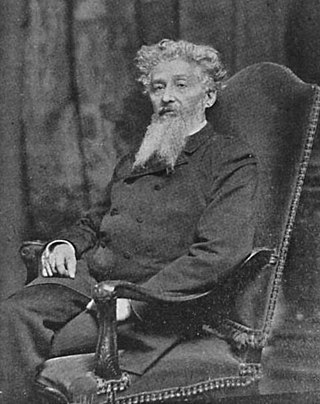
Ramón Emeterio Betances y Alacán was a Puerto Rican independence advocate and medical doctor. He was the primary instigator of El Grito de Lares revolution and is considered to be the father of the Puerto Rican independence movement. Since the Grito galvanized a burgeoning nationalist movement among Puerto Ricans, Betances is also considered "El Padre de la Patria". Because of his charitable deeds for people in need, he also became known as "El Padre de los Pobres".

El Grito de Lares, also referred to as the Lares uprising, the Lares revolt, the Lares rebellion, or the Lares revolution, was the first of two revolts against Spanish rule in Puerto Rico. The revolt was planned by Ramón Emeterio Betances and Segundo Ruiz Belvis. It began on September 23, 1868, in the town of Lares, for which it is named. It spread rapidly to various revolutionary cells throughout the island. The revolutionary flag of El Grito de Lares is recognized as the first flag of Puerto Rico.

The Ten Years' War, also known as the Great War and the War of '68, was part of Cuba's fight for independence from Spain. The uprising was led by Cuban-born planters and other wealthy natives. On 10 October 1868, sugar mill owner Carlos Manuel de Céspedes and his followers proclaimed independence, beginning the conflict. This was the first of three liberation wars that Cuba fought against Spain, the other two being the Little War (1879–1880) and the Cuban War of Independence (1895–1898). The final three months of the last conflict escalated with United States involvement, leading to the Spanish–American War.

Lt. General José Antonio de la Caridad Maceo y Grajales was a Cuban general and second-in-command of the Cuban Army of Independence.
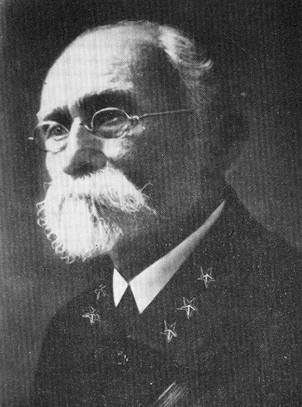
Máximo Gómez y Báez was a Dominican Generalissimo in Cuba's War of Independence (1895–1898). He was known for his controversial scorched-earth policy, which entailed dynamiting passenger trains and torching the Spanish loyalists' property and sugar plantations—including many owned by Americans. He greatly increased the efficacy of the attacks by torturing and killing not only Spanish soldiers, but also Spanish sympathizers and especially Cubans loyal to Spain. By the time the Spanish–American War broke out in April 1898, the rebellion was virtually defeated in most of Western Cuba, with only a few operating pockets in the center and the east. He refused to join forces with the Spanish in fighting off the United States, and he retired to the Quinta de los Molinos, a luxury villa outside of Havana after the war's end formerly used by captains generals as summer residence.

The decolonization of the Americas occurred over several centuries as most of the countries in the Americas gained their independence from European rule. The American Revolution was the first in the Americas, and the British defeat in the American Revolutionary War (1775–1783) was a victory against a great power, aided by France and Spain, Britain's enemies. The French Revolution in Europe followed, and collectively these events had profound effects on the Spanish, Portuguese, and French colonies in the Americas. A revolutionary wave followed, resulting in the creation of several independent countries in Latin America. The Haitian Revolution lasted from 1791 to 1804 and resulted in the independence of the French slave colony. The Peninsular War with France, which resulted from the Napoleonic occupation of Spain, caused Spanish Creoles in Spanish America to question their allegiance to Spain, stoking independence movements that culminated in various Spanish American wars of independence (1808–33), which were primarily fought between opposing groups of colonists and only secondarily against Spanish forces. At the same time, the Portuguese monarchy fled to Brazil during the French invasion of Portugal. After the royal court returned to Lisbon, the prince regent, Pedro, remained in Brazil and in 1822 successfully declared himself emperor of a newly independent Brazilian Empire.
The military history of Cuba is an aspect of the history of Cuba that spans several hundred years and encompasses the armed actions of Spanish Cuba while it was part of the Spanish Empire and the succeeding Cuban republics.
Marcano is a surname of Spanish origin. The Italian version of this surname is "Marciano". It was a military family that came to the New World with Christopher Columbus. The Family later grew and spread throughout the Caribbean, where the surname became rooted in the countries of Dominican Republic, Puerto Rico, Cuba and Venezuela and eventually Trinidad & Tobago.
The Dominican Restoration War or the Dominican War of Restoration was a guerrilla war between 1863 and 1865 in the Dominican Republic between nationalists and Spain, the latter of which had recolonized the country 17 years after its independence. The war resulted in the restoration of Dominican sovereignty, the withdrawal of Spanish forces, the separation of the Captaincy General of Santo Domingo from Spain, and the establishment of a second republic in the Dominican Republic.

The Reintegration of Santo Domingo was a brief period of Spanish reintegration of the Dominican Republic. In 1861, Dominican general Pedro Santana suggested retaking control of the Dominican Republic to Queen Isabella II of Spain, after a period of 17 years of Dominican sovereignty. The newly independent Dominican Republic was recovering economically from the recently ended Dominican War of Independence (1844–1856), when the Dominican Republic had won its independence against Haiti. The Spanish Crown and authorities, which scorned and rejected the peace treaties signed after the dismantling of some of its colonies in the Spanish West Indies some 50 years prior, welcomed his proposal and set to reestablish the Capitancy.
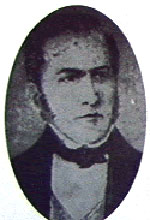
Manuel José Jimenes González was a military figure and politician in the Dominican Republic. He served as the second President of the Dominican Republic from September 8, 1848, until May 29, 1849. Prior to that he served as the country's Minister of War and Marine Affairs.

Arsenio Martínez-Campos y Antón, born Martínez y Campos, was a Spanish officer who rose against the First Spanish Republic in a military revolution in 1874 and restored Spain's Bourbon dynasty. Later, he became Captain-General of Cuba. Martínez Campos took part in wars in Africa, Mexico and Cuba and in the Third Carlist War.
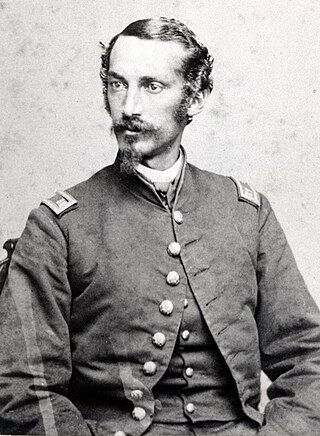
Federico Fernández Cavada was an officer in the Union Army during the American Civil War and a diplomat, as well as commander-in-chief of all the Cuban forces during Cuba's Ten Years' War. Because of his artistic talents, he was assigned to the Hot Air Balloon Unit of the Union Army. From the air he sketched what he observed of enemy positions and movements. On April 19, 1862, Fernández Cavada sketched enemy positions from Thaddeus Lowe's Constitution balloon during the Peninsular Campaign in Virginia.
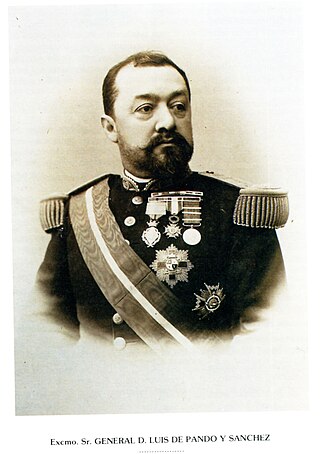
Lieutenant-General Luis Manuel de Pando y Sánchez was a Spanish general during the Spanish–American War, a Civil Governor of the Province of Santiago, Cuba. He was nominated for the Cross of San Fernando, promoted to the rank of Colonel of the Army of the field of battle by His Majesty King Alfonso XII, and the youngest General in the Spanish Army.
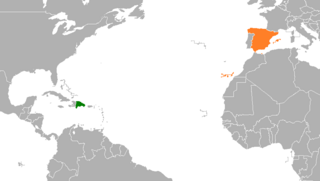
Dominican Republic–Spain relations are the bilateral relations between the Dominican Republic and Spain. Both nations are members of the Association of Academies of the Spanish Language and the Organization of Ibero-American States.

Modesto Díaz (1826–1892) was a Dominican Major General of the Cuban Liberation Army. He was a member of the Spanish Army in his country of origin during the Dominican Restoration War (1863–1865). He settled in Cuba and was reinstated to active service after the Carlos Manuel de Céspedes uprising. At the suggestion of Luis Marcano, he went to the side of the Cubans, and conducted several victorious battles against the Spanish during the Ten Years' War (1868–1878).

















